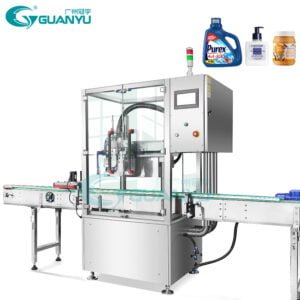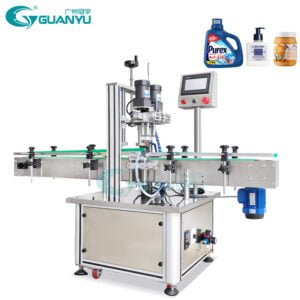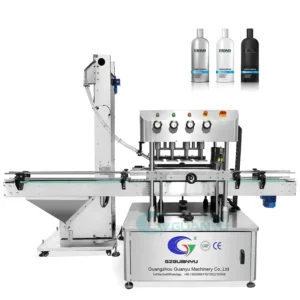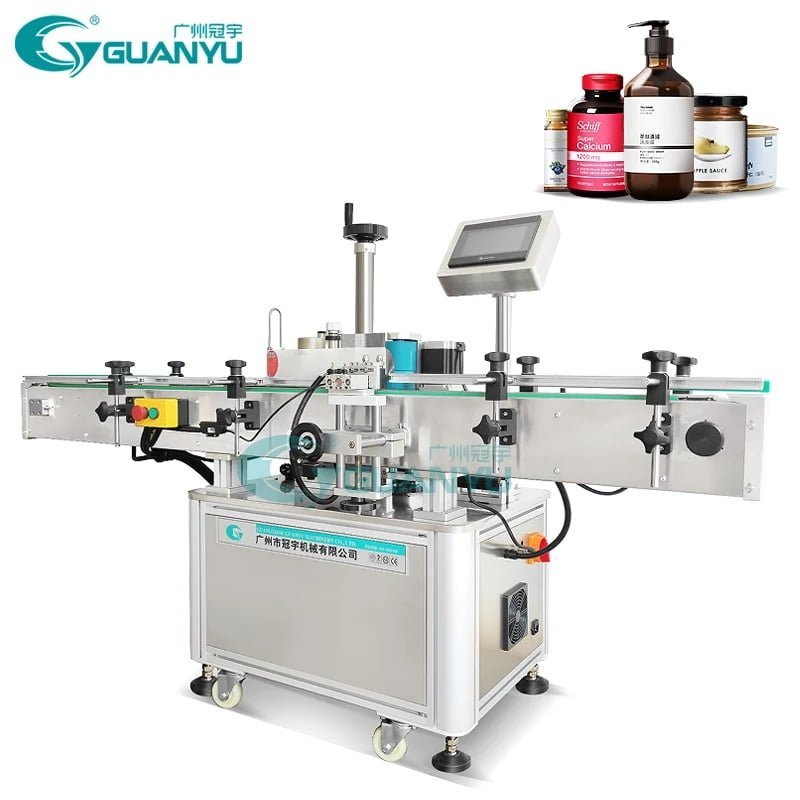Introducción
A capping machine is a crucial piece of equipment used in various industries, como los productos farmacéuticos, comida y bebida, productos cosméticos, y productos químicos. It plays a vital role in securely sealing containers, ensuring product integrity, and preventing leakage or contamination.
Types of Capping Machines

There are several types of capping machines available, each designed to meet specific industry requirements. Some common types include:
- Screw Capping Machines: These machines use a rotating spindle to tighten caps onto containers. They are commonly used for bottles with screw caps.
- Press-on Capping Machines: These machines apply pressure to snap-on caps, commonly used for containers with push-on lids or caps.
- Snap Capping Machines: Similar to press-on capping machines, snap capping machines apply pressure to snap-on caps, but they are specifically designed for containers with snap-on lids.
- Corking Machines: These machines are used for sealing bottles with cork stoppers, commonly found in the wine industry.
- Induction Sealing Machines: Induction sealing machines use electromagnetic induction to create a hermetic seal on containers with foil-lined caps. They are commonly used in the pharmaceutical and food industries.
Principio de funcionamiento
The working principle of a capping machine depends on its type. Sin embargo, the basic process involves the following steps:
- Container Placement: Containers are positioned in the correct location on the machine, ready for capping.
- Cap Feeding: Caps are fed into the machine either manually or automatically, depending on the machine’s design.
- Capping Process: The machine applies the necessary force or rotation to secure the cap onto the container. This can involve screwing, pressing, or snapping the cap into place.
- Container Release: Once the cap is securely applied, the machine releases the container, allowing it to move along the production line.
Benefits of Using a Capping Machine
Investing in a capping machine offers several benefits for businesses:
- Increased Efficiency: Capping machines automate the capping process, allowing for faster production rates and reducing the need for manual labor.
- Consistent Results: Capping machines ensure consistent and uniform sealing, minimizing the risk of leaks or product contamination.
- Improved Productivity: By streamlining the capping process, businesses can increase overall productivity and meet higher demand.
- Reduced Costs: With automated capping, businesses can save on labor costs and minimize product wastage due to improper sealing.
- Versatilidad: Capping machines can be customized to accommodate various container sizes, formas, and cap types, making them suitable for a wide range of products.
Factors to Consider When Choosing a Capping Machine
When selecting a capping machine, it’s essential to consider the following factors:
- Production Requirements: Determine the desired production rate and choose a machine that can meet those requirements.
- Container and Cap Compatibility: Ensure the machine is compatible with the size, forma, and type of containers and caps used in your production.
- Nivel de automatización: Decide whether a fully automatic, semiautomático, or manual capping machine is suitable for your production needs.
- Presupuesto: Consider the initial investment cost, maintenance expenses, and potential return on investment.
- Quality and Reliability: Research the reputation and reliability of the manufacturer to ensure the machine is of high quality and will perform consistently.
Maintenance and Care
To ensure the longevity and optimal performance of a capping machine, regular maintenance is crucial. Some maintenance tasks include:
- Cleaning and Lubrication: Clean the machine regularly and apply appropriate lubrication to moving parts as recommended by the manufacturer.
- Inspection and Replacement: Regularly inspect the machine for any worn-out or damaged parts and replace them promptly.
- Operator Training: Train operators on proper machine operation, maintenance procedures, and safety protocols.
- Mantenimiento de registros: Maintain a record of maintenance activities, such as cleaning, lubrication, y reemplazos de piezas, to ensure timely and consistent maintenance.
Conclusión
A capping machine is an essential investment for businesses in industries that require secure and efficient container sealing. By understanding the different types, working principles, and benefits of capping machines, as well as considering important factors when choosing one, businesses can make informed decisions to enhance their production processes and ensure product integrity.




